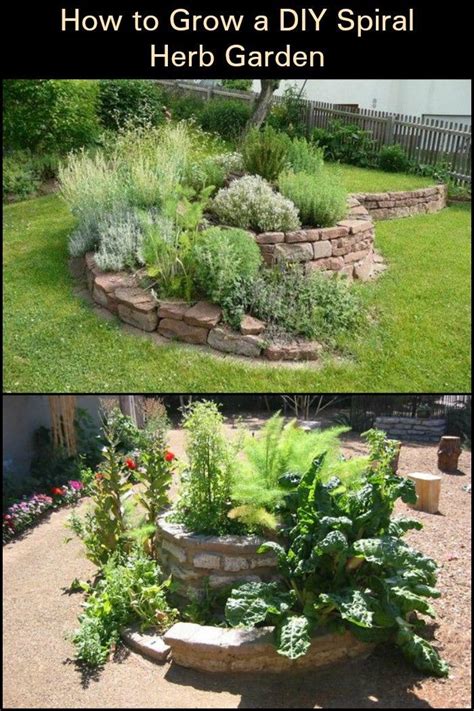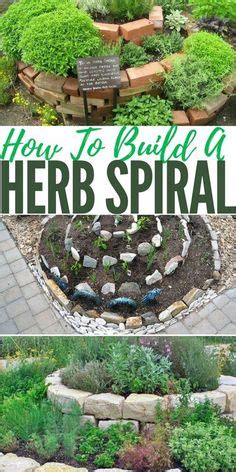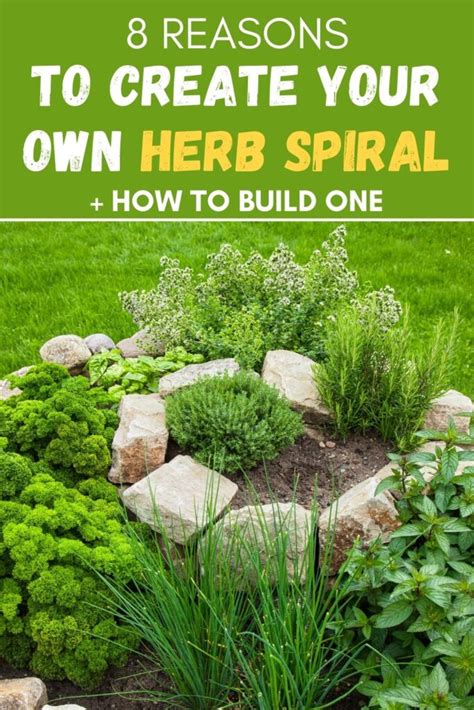Herb spirals are a creative and space-efficient way to grow fresh herbs in your home garden, offering both functionality and aesthetic appeal. By using a spiral design, you can maximize planting space while creating microclimates that cater to the unique needs of different herbs. This not only boosts the overall health of your plants but also makes harvesting more convenient. In this article, we’ll explore the benefits of herb spirals, guide you through the process of building one, and share some of the most inspiring design ideas. You’ll also discover the best herbs to grow and essential tips for maintaining a thriving herb spiral garden.
shzow.com invites you to delve into this topic thoroughly.
1. Introduction to Herb Spirals: Benefits and Basics
Herb spirals are an innovative gardening technique designed to make the most of limited space while creating a beautiful, functional focal point in your home garden. This simple structure typically consists of a spiral mound of soil, with different herbs planted at various heights along the spiral’s curve. The unique design allows for better water drainage and the creation of microclimates, meaning you can grow a wider variety of herbs in a small area.
One of the key benefits of herb spirals is their space efficiency. They provide ample growing space for numerous herbs, even in compact gardens. Additionally, they are easy to access for harvesting and maintain, reducing the need for bending or reaching. The tiered planting system allows for excellent sun exposure and natural water distribution, ensuring your herbs thrive.
Building a herb spiral also offers the opportunity to engage with sustainable gardening practices, using natural materials like stones, bricks, or recycled items. Whether you’re a seasoned gardener or a beginner, herb spirals can be a perfect addition to your garden.

2. Step-by-Step Guide to Building Your Own Herb Spiral
Building your own herb spiral is a rewarding project that can be completed in a few simple steps. Begin by selecting a sunny spot in your garden, as most herbs require plenty of sunlight. Mark the outline of the spiral on the ground using a garden hose or string, ensuring it’s around 3 to 6 feet in diameter depending on your space.
Next, gather materials such as rocks, bricks, or recycled materials to form the walls of the spiral. Start constructing the spiral from the center, gradually building it outward and upward to create a tiered effect. As you build, fill the structure with good-quality garden soil or compost.
Once your spiral is built, it’s time to plant your herbs. Place herbs that prefer dry conditions, like rosemary and thyme, at the top of the spiral where the drainage is best. Herbs that like more moisture, such as parsley or mint, should be planted at the lower levels. Water your herb spiral thoroughly after planting, and watch your herbs thrive in their new, sustainable garden home.

3. Top Design Ideas and Inspirations for Herb Spirals
Herb spirals offer endless possibilities when it comes to design, allowing you to tailor the structure to your personal style and garden space. One popular idea is the classic rustic stone spiral, using natural rocks or reclaimed bricks to create a timeless, earthy look. This design blends beautifully into any garden, adding a touch of charm while serving a functional purpose.
For a more modern approach, consider using sleek, geometrically arranged tiles or metal edging to create a contemporary spiral that stands out as an artistic focal point in your yard. You can also incorporate unique shapes such as ovals or curves, allowing for more creative expression while still following the spiral concept.
If you’re short on space, a vertical herb spiral can be a great option. Instead of building outwards, stack the tiers higher to save ground space while still providing ample planting room. Adding small water features or decorative garden ornaments can further enhance the design, making your herb spiral not just a practical gardening solution but a beautiful statement piece that reflects your taste and creativity.

4. Best Herbs to Grow in Your Herb Spiral
When selecting herbs for your herb spiral, it’s essential to consider their growing conditions and preferences, as the spiral’s design creates different microclimates. At the top of the spiral, where drainage is best and the soil tends to be drier, hardy Mediterranean herbs thrive. Consider planting rosemary, thyme, oregano, and lavender in this area. These herbs love full sun and require less water, making the top of the spiral an ideal location.
As you move toward the middle of the spiral, the soil retains a bit more moisture, making it suitable for herbs like sage, basil, and cilantro. These herbs appreciate moderate sunlight and consistent watering, and the middle section provides just the right balance.
At the bottom of the spiral, where the soil stays moist due to natural water flow, herbs like parsley, chives, mint, and coriander will flourish. These herbs prefer cooler, shadier spots and need more moisture to stay healthy. By placing them at the base, you ensure they receive the moisture and care they need. With the right selection, your herb spiral will provide you with a diverse, thriving array of fresh herbs.
5. Maintenance Tips for a Thriving Herb Spiral Garden
Maintaining a thriving herb spiral garden is relatively simple with a few key practices. First, regular watering is essential, especially in the early stages after planting. Since herb spirals create natural drainage, it’s important to monitor the moisture levels at the top and bottom. Ensure that herbs at the top don’t dry out too much, while those at the base aren’t overwatered.
Pruning is another vital task. Regularly trim herbs like basil, mint, and rosemary to encourage healthy growth and prevent them from becoming too leggy or overgrown. This also helps keep your spiral looking neat and orderly.
Weeding is necessary to prevent unwanted plants from competing with your herbs for nutrients. Use mulch to help suppress weeds and retain moisture, especially around the base.
Lastly, consider rotating your herbs every season or year to prevent the soil from becoming depleted of nutrients. Composting or adding organic fertilizer can also help maintain soil health, ensuring your herb spiral remains a productive and beautiful feature of your garden for years to come.
Creating an herb spiral is a practical and visually appealing way to enhance your home garden. With its space-efficient design, diverse growing conditions, and customizable aesthetics, an herb spiral provides a perfect environment for a wide variety of herbs. By following simple maintenance practices, you can enjoy a flourishing, productive herb garden year-round. Whether you’re a novice or experienced gardener, an herb spiral is a creative addition that brings both beauty and functionality to your outdoor space.
shzow.com
